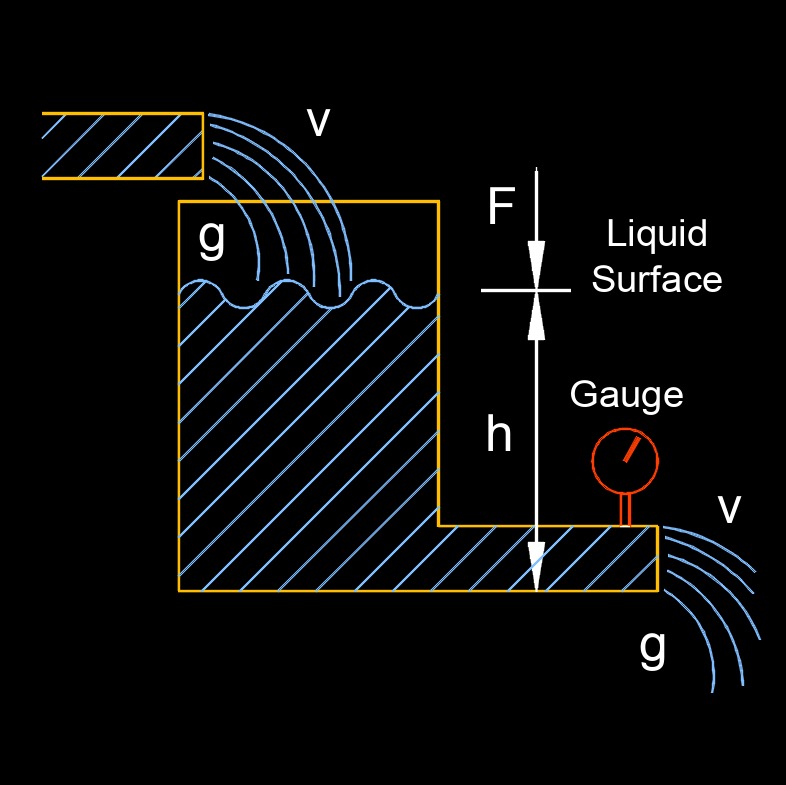Head Velocity
Head Velocity Formula |
||
|
\( \Delta h \;=\; \dfrac{ v^2 }{ 2 \cdot g }\) (Head Velocity) \( v \;=\; \sqrt{ 2 \cdot g \cdot \Delta h } \) \( g \;=\; \dfrac{ v^2 }{ 2 \cdot \Delta h }\) |
||
| Symbol | English | Metric |
| \(\large{ \Delta h }\) = Flowing Fluid Head Loss | \(ft\) | \(m\) |
| \(\large{ v }\) = Fluid Velocity | \(ft\;/\;sec\) | \(m\;/\;s\) |
| \(\large{ g }\) = Gravitational Acceleration | \(ft\;/\;sec^2\) | \(m\;/\;s^2\) |
 Head velocity is when the liquid is allowed to flow from the tank while additional liquid is being added. The movement of the liquid through the pipe is converted to kinetic energy that is called head velocity.
Head velocity is when the liquid is allowed to flow from the tank while additional liquid is being added. The movement of the liquid through the pipe is converted to kinetic energy that is called head velocity.
For a tank, the head velocity can vary depending on factors such as the shape and size of the tank, the flow rate of fluid entering or leaving the tank, and the design of any mixing or agitation systems within the tank. Understanding the head velocity is important for various applications, including ensuring proper mixing of contents, maintaining uniform temperature or concentration distributions, and preventing sedimentation or settling of solids within the tank. It's also relevant for determining the hydraulic performance of pumps or other fluid handling equipment connected to the tank.

